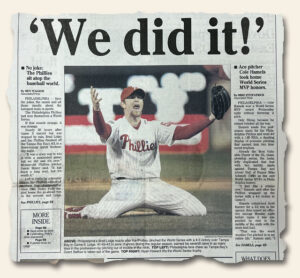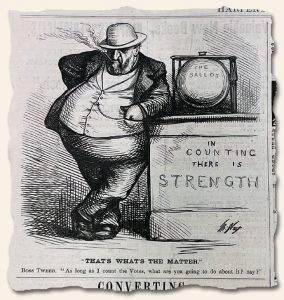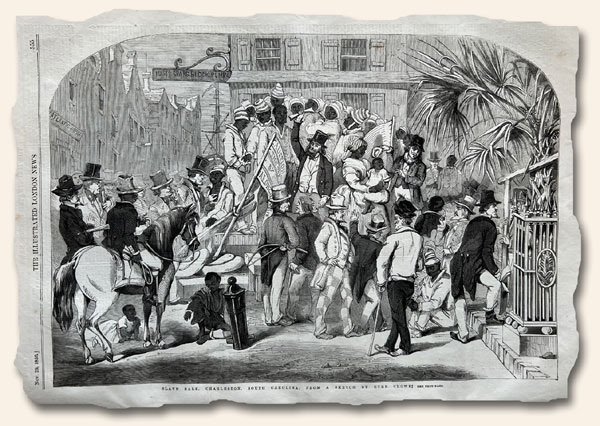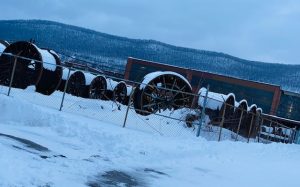A “Thankful” Heart Is Great Medicine… Happy Thanksgiving!
November 17, 2022 by GuyHeilenman · 2 Comments
A wise man was once inspired to pen: “A joyful heart is good medicine, but a broken spirit dries up the bones” (Solomon, Prov. 17:22). While many can attest to the wisdom and accuracy of this proverb, there is no doubt joy and gratitude are joined at the hip – or perhaps more appropriately said, at the heart. In this regard…
I have always been struck to the bone by reading about or seeing images of families, friends, and at times entire communities gathered together giving thanks to their Creator while enduring severe hardship. Many a President has issued Proclamations for a Day of Thanksgiving, Humiliation, and Prayer in the midst of war or soon after a severe calamity had befallen the nation. Yet, surrounded by what would appear to be great distress, somehow they were able to reach down into their innermost selves to find enough joy (not happiness or pleasure) to ignite thankful hearts. I don’t know about you, but such expressions of gratefulness are humbling, yet soothing to the soul.
The two rare Winslow Homer prints found side-by-side in the Frank Leslie’s Illustrated for Dec. 23, 1865 are shown below. In case their captions are too small to be easily read, they are: “Thanksgiving Day–Hanging Up the Musket” and “Thanksgiving Day–The Church Porch“. The Civil War had come to an end eight months prior and the guns of war (notice the dates) were being retired to their perches above the very place where Christmas stockings would soon be hung. What a relief to finally have the war at their backs! However, in case one might conclude its impact would soon dissolve into a distant memory, the corresponding illustration showing the gathering of the community for Thanksgiving worship reveals the fallout which would last a lifetime… for those who still had lifetimes to give. How they still found the strength to join together for the giving of thanks as a marvel.
That’s the kind of inner strength I want for my family and me. Perhaps you do as well. Perhaps it starts with regularly taking time to smell the roses while acknowledging the Source of the daily blessings which so often come our way. Happy Thanksgiving.


Note: JSTOR posted a related article featuring an excerpt by Christopher Kent Wilson which provides additional background regarding the Homer prints.
The Sounds of Summer and the Crack of the Bat…
October 28, 2022 by Laura Heilenman · Leave a Comment
 What makes summer feel like summer? Hazy evenings where light still lingers until after 9… Fireflies flitting across the grass… Children laughing as they romp in the neighborhood yards or… the crack of a bat at the local little league field? We at RareNewspapers have a particular fondness for baseball – not only because our Phillies made it to the World Series… or that our founder (Tim Hughes) has served for decades on the board of Little League International… or that the Little League World Series is played each year within a few blocks of our archives in PA, but also because baseball captures the essence of summer, America and apple-pie (with vanilla ice-cream), and we each have a fondness for all three.
What makes summer feel like summer? Hazy evenings where light still lingers until after 9… Fireflies flitting across the grass… Children laughing as they romp in the neighborhood yards or… the crack of a bat at the local little league field? We at RareNewspapers have a particular fondness for baseball – not only because our Phillies made it to the World Series… or that our founder (Tim Hughes) has served for decades on the board of Little League International… or that the Little League World Series is played each year within a few blocks of our archives in PA, but also because baseball captures the essence of summer, America and apple-pie (with vanilla ice-cream), and we each have a fondness for all three.
To join our baseball enthusiasm a bit, take a look at some of our best baseball issues including one from the current catalog … a CHICAGO DAILY TRIBUNE, Sept. 29, 1920 covering the Black Sox Scandal. Even America’s pastime has a skeleton or two in its closet.
Happy Independence Day – Contrasting Celebrations…
July 4, 2022 by GuyHeilenman · Leave a Comment
The July 11, 1868 issue of Harper’s Weekly contained prints by two notable illustrators – intentionally included to contrast typical 4th of July celebrations in the rural south (Thomas Worth) with those held in northern cities (Winslow Homer). Their diversity reminded me that we can have profound differences while maintaining our bonds of common citizenry. The Revolutionary War was fought for freedom. Today we fight to maintain that freedom. While our diversity in many ways has widened over the past few decades, this new battle is no less noble – and one which calls for unity of purpose. Hopefully we will heed the call. Happy 4th!

Journalism from Early America to the Digital Age… Election Fraud and more…
June 10, 2022 by GuyHeilenman · Leave a Comment
 Someone recently brought to my attention an article posted on the website “Brewminate: A Bold Blend of News and Ideas”. While scanning the article I was intrigued by the presence of illustrations of newspapers we have or have previously offered. One in particular which caught my attention was the timely political cartoon by Thomas Nast found in the Oct. 7, 1871 issue of Harper’s Weekly. While a degree of election fraud is (unfortunately) part-and-parcel of the election process, I was inspired to read through the entire article, and in so doing, found it to be quite informative… and wondered if the friends of Rare & Early Newspapers might also find it interesting. Hopefully you will also enjoy reading it:
Someone recently brought to my attention an article posted on the website “Brewminate: A Bold Blend of News and Ideas”. While scanning the article I was intrigued by the presence of illustrations of newspapers we have or have previously offered. One in particular which caught my attention was the timely political cartoon by Thomas Nast found in the Oct. 7, 1871 issue of Harper’s Weekly. While a degree of election fraud is (unfortunately) part-and-parcel of the election process, I was inspired to read through the entire article, and in so doing, found it to be quite informative… and wondered if the friends of Rare & Early Newspapers might also find it interesting. Hopefully you will also enjoy reading it:
“Journalism from Early America to the Digital Age”
Take a Closer Look … The Delicate Details of Woodcut Prints…
April 14, 2022 by Laura Heilenman · 1 Comment
I have had some fascinating conversations this past year with one of our collecting friends who is an expert in woodcut prints. I won’t be a name dropper, however, if he is reading this, he will have no doubt as to who I am referencing. I greatly appreciate the time he took to share his knowledge which has motivated me to pause and look more carefully at every print I encounter in the RareNewspapers archives. My proficiency in this area is sparse and not terribly reliable but I did want to share a few takeaways.
Some artists of woodcut prints would draw on paper and send the illustration to a publisher who would cut the paper into tiny square blocks and have each one sketched onto a square block of wood. These wooden squares would be handed out to different craftsmen who would carve their block and then the blocks would be rejoined for printing. Sometimes, when time was of the essence, each craftsman would use carving tools which could create many tiny lines at once. If you look closely at many such illustrations, you can tell these prints have hundreds of parallel lines – indicating the use of these tools. Occasionally, when more time was available, each line was formed individually – a painstaking process, but one which produced an almost unimaginable degree of detail!
Some artists preferred to draw their own prints directly onto the wood and so they were sent a group of one-inch square pieces bound together with twine. When the artist had finished their drawing, the publisher would untie the pieces and distribute the blocks to the woodcarvers.
Regardless of how each print was created, the detail, craftsmanship and artistic skill needed to produce one illustration is mind blowing. So, the next time you glance through a Harper’s Weekly, Leslie’s Illustrated , Illustrated London News, or handful of other illustrated titles of the “woodcut era”, perhaps you will join me in pausing and giving a bit of deference to these creators of beauty. Thanks Bill for sharing this delightful insight with me.
They put it in print – an 1877 opinion of The Press…
January 6, 2022 by Laura Heilenman · Leave a Comment
Sometimes a picture says it all. The illustration below was printed in a Harper’s Weekly dated June 2, 1877, but left undated some might think it is a recent print. Do these “1000 words” from the 19th century, in fact, have staying power? You decide.
A Tale of Two Sides – Belle Boyd vs. Elizabeth Van Lew…
November 8, 2021 by Laura Heilenman · Leave a Comment
How often, as we are investigating the Civil War, do we come upon stories about families divided… brother fighting brother? The question was a bit rhetorical as any of us who have spent much time studying the Civil War knows, it was a tale of two sides and fractured relationships. Recently, I came upon a New York Times with fascinating coverage of an infamous female spy for the Confederacy named Belle Boyd. The issue describes her as follows: “Bello Boyd… being about twenty-five years of age, of sorrel hair, piercing gray eyes, closely knit form, strictly virtuous, very energetic, and decidedly ‘gabby’ “. The article goes on to say: “Her father, who is in moderate circumstances, was unable to endow her with a ‘magnificent fortune’, or ‘ superior education’. So much for this Southern heroine; and yet she has not failed to accomplishing her full share of treason, having undoubtedly betrayed our forces at Front Royal, whereby the First Maryland Regiment was so badly cut up”. Wikipedia states: “Boyd was arrested at least six times but somehow evaded incarceration. By late July 1862, detective Allan Pinkerton had assigned three men to work on her case.” [see the image below for more]
Intrigued by this Confederate femme fatale, I began to look for a Union counterpart. It wasn’t long before I came upon, Elizabeth Van Lew. Elizabeth lived in Richmond Va. but was born into a family with abolitionist ties and was educated in Philadelphia, the city where her abolitionist grandfather had been mayor. Working as a nurse to Union soldiers imprisoned in Richmond, she aided prisoners trying to escape and listened for information she could pass on to the Union Army. General Grant said of Van Lew, “You have sent me the most valuable information received from Richmond during the war.” On July 14, 1866, Harper’s Weekly covered this amazingly brave woman and her undercover work for the north.
Feeling as if I have just scratched the surface with these woman spies… perhaps there’ll be more to come.
From Waco to Brooklyn…
February 8, 2021 by Laura Heilenman · Leave a Comment
Have you ever been thinking one thing and a moment later your mind has completely carried you down several rabbit holes and back up into a field far away? As you try to retrace your steps, you are utterly amazed at how you ever ended up where you did. I find history to be much the same. I may begin my historical trek in a tiny town in the mountains of Northern Pennsylvania, but before long I find I’ve meandered to the center of New York City. Such is the journey I took this snowy afternoon.
 Every day I drive past an old industrial complex in my mountain town Of Williamsport, PA.. The signage says, “Williamsport Wire Rope Company” and the factory yard is filled with enormous spools stacked about … a photographer’s fantasy for possible black and white images. This picturesque scene is what originally caught my attention on those many drives home. This particular day a rabbit trail led me to an exploration of what the wire cable produced in this factory would have been used for which quickly lead me to an engineer named John Augustus Roebling (1806 – 1869). John had owned the very first wire cable company, similar to the one in my town. Not satisfied to just produce these cables, his mind dreamt of the many, yet be discovered, uses those wires might have … Voila ! … Suspension Bridges. As a suspension bridge designer and builder extraordinaire, he was instrumental in creating the beautiful city of Pittsburgh which became known as “The City of Bridges”. From Pittsburgh to the Niagara River … from Waco to Brooklyn NY, this man took spools of wire cable and transformed each area he touched into a practical work of art. My rabbit trail reminds me that my local history can be the start of the very best future road trips. Whether your interests lie with new scientific discoveries, historical biographies or works of art, much of history can satisfy almost any inquisitive mind. I see a historical bridge excursion coming this spring… perhaps even from Waco to Brooklyn.
Every day I drive past an old industrial complex in my mountain town Of Williamsport, PA.. The signage says, “Williamsport Wire Rope Company” and the factory yard is filled with enormous spools stacked about … a photographer’s fantasy for possible black and white images. This picturesque scene is what originally caught my attention on those many drives home. This particular day a rabbit trail led me to an exploration of what the wire cable produced in this factory would have been used for which quickly lead me to an engineer named John Augustus Roebling (1806 – 1869). John had owned the very first wire cable company, similar to the one in my town. Not satisfied to just produce these cables, his mind dreamt of the many, yet be discovered, uses those wires might have … Voila ! … Suspension Bridges. As a suspension bridge designer and builder extraordinaire, he was instrumental in creating the beautiful city of Pittsburgh which became known as “The City of Bridges”. From Pittsburgh to the Niagara River … from Waco to Brooklyn NY, this man took spools of wire cable and transformed each area he touched into a practical work of art. My rabbit trail reminds me that my local history can be the start of the very best future road trips. Whether your interests lie with new scientific discoveries, historical biographies or works of art, much of history can satisfy almost any inquisitive mind. I see a historical bridge excursion coming this spring… perhaps even from Waco to Brooklyn.
Snapshot 1886… Mark Twain – yet another hidden gem…
January 7, 2021 by GuyHeilenman · Leave a Comment
 This forum has often been used to highlight one of the unique benefits of the hobby of collecting Rare & Early newspapers – that is, collecting a newspaper for one purpose, only to later find a more precious item hidden within its pages. Such is the case with the Harper’s Weekly for September 29, 1866. For 40+ years we offered this issue with a spotlight on a variety of the interesting illustrations found within its 16 pages. However, we recently discovered yet another hidden gem: an article accompanying the popular print: “Burning of the California Clipper ‘Hornet'”. What’s so special about this uncredited article? It was written by Mark Twain – making it the first time an article written by him received national attention. What a find!
This forum has often been used to highlight one of the unique benefits of the hobby of collecting Rare & Early newspapers – that is, collecting a newspaper for one purpose, only to later find a more precious item hidden within its pages. Such is the case with the Harper’s Weekly for September 29, 1866. For 40+ years we offered this issue with a spotlight on a variety of the interesting illustrations found within its 16 pages. However, we recently discovered yet another hidden gem: an article accompanying the popular print: “Burning of the California Clipper ‘Hornet'”. What’s so special about this uncredited article? It was written by Mark Twain – making it the first time an article written by him received national attention. What a find!
If you happen to be one of the lucky one’s to have purchased this issue without knowledge of the Mark Twain contribution, you now possess an issue of significantly greater notoriety (and therefore value) than what you previously had thought. Good for you.
March through the years via the lens of Rare & Early Newspapers…
March 6, 2020 by GuyHeilenman · 4 Comments
 Walk with us back through time to see what noteworthy, historic and collectible events occurred during the month of February. In so doing, we hope you’ll agree: “History is never more fascinating than when it’s read from the day it was first reported.”
Walk with us back through time to see what noteworthy, historic and collectible events occurred during the month of February. In so doing, we hope you’ll agree: “History is never more fascinating than when it’s read from the day it was first reported.”
March Through Time


